FINALIST FOR THE HUGO AWARD • FINALIST FOR THE LOCUS AWARD • NOMINATED FOR THE DIANA JONES AWARD
From one of the most iconic game brands in the world, this official Dungeons & Dragons illustrated history provides an unprecedented look at the visual evolution of the brand and its continued influence on the worlds of pop culture and fantasy. You’ll find more than seven hundred pieces of artwork within from
• each edition of the core role-playing books, supplements, and adventures
• the Forgotten Realms and Dragonlance novels
• decades of Dragon and Dungeon magazines
• classic advertisements and merchandise
• plus never-before-seen sketches, large-format canvases, rare photographs, one-of-a-kind drafts, and more from the now-famous designers and artists associated with Dungeons & Dragons
The superstar author team gained unparalleled access to the archives of Wizards of the Coast and the personal collections of top collectors, as well as the designers and illustrators who created the distinctive characters, concepts, and visuals that have defined fantasy art and gameplay for generations. The 50th Anniversary Edition also includes six fold-out sections featuring essential artwork from the most iconic—and deadliest—dungeons in D&D history. This is the most comprehensive collection of D&D imagery ever assembled, making this the ultimate collectible for the game’s millions of fans around the world.
Read more
3052 reviews for Dungeons & Dragons Art & Arcana: A Visual History
Add a review
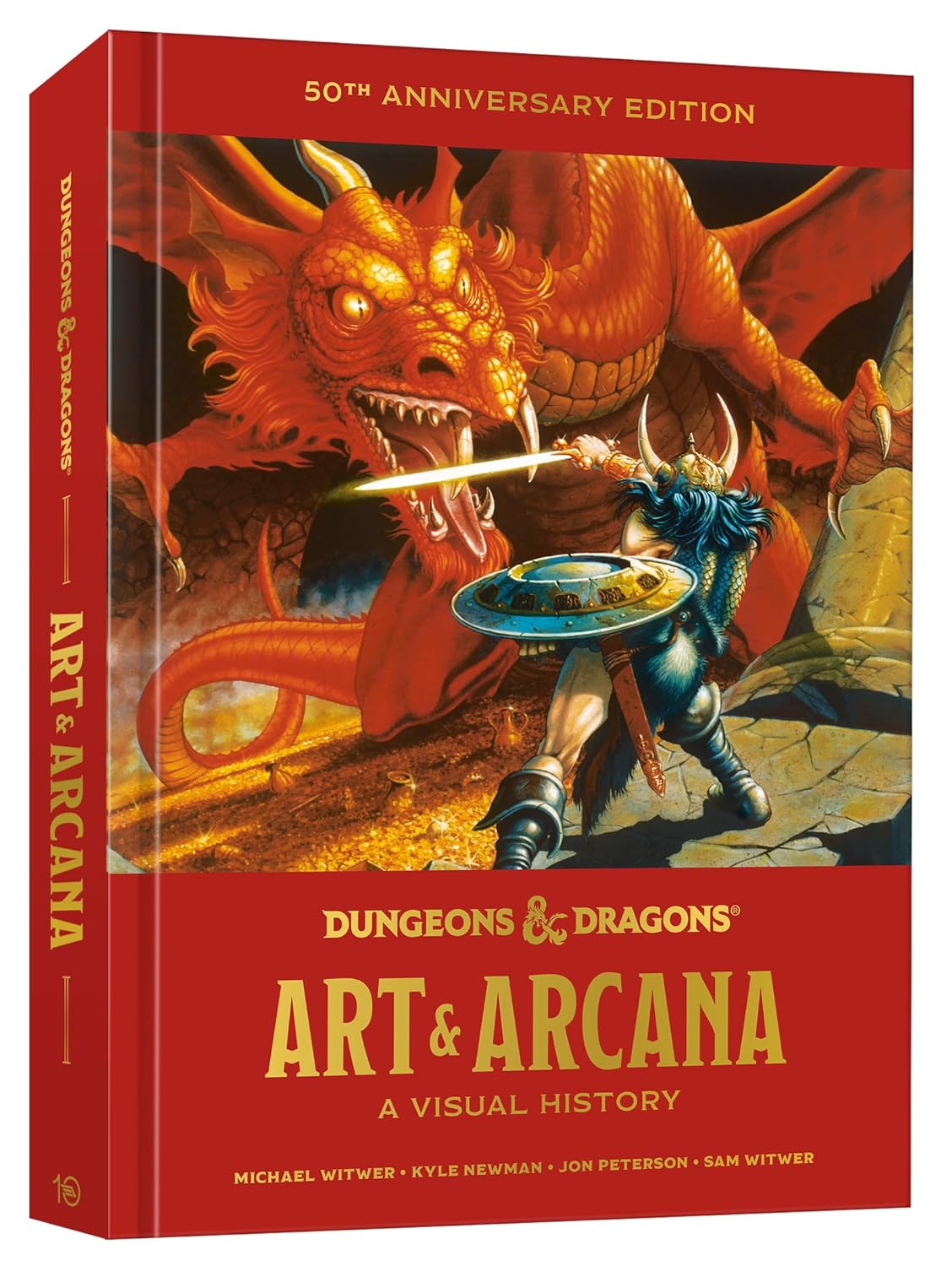
Original price was: $50.00.$20.84Current price is: $20.84.

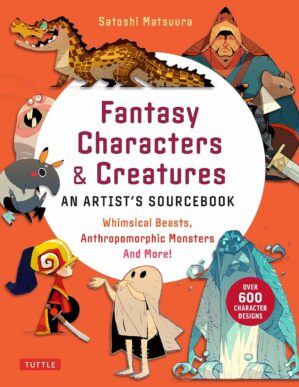
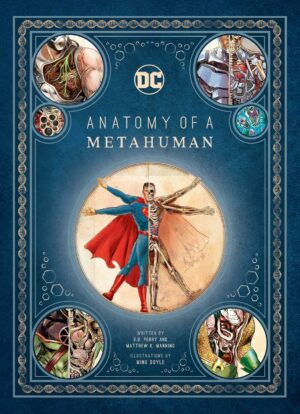
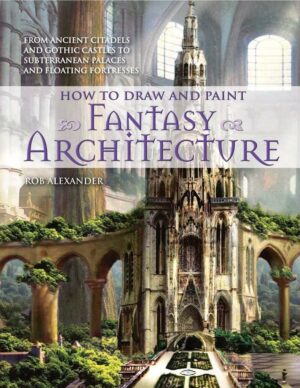
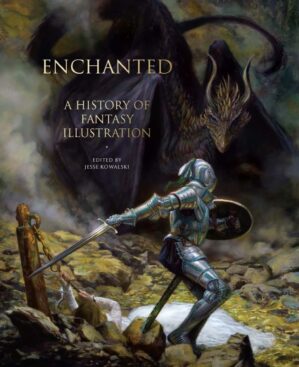
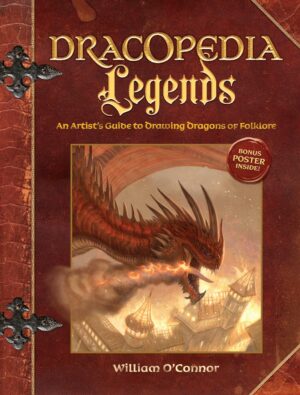
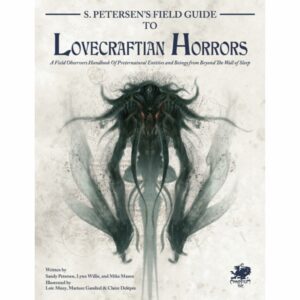

LimonDude –
ROLLING THE DICE, REWINDING TIME
I’ve been rolling dice since 1982, when my mom—who had no idea what she was about to unleash—bought me the AD&D Red Box. I still remember those waxy blue dice and the little white crayon you had to rub into the numbers just to see them. That box was my gateway to a lifetime of imagination, and this book? This book is a time machine back to that very moment.
Dungeons & Dragons Art & Arcana: A Visual History isn’t just a coffee table book. It’s a resurrection spell.
REDISCOVERING THE MAGIC MISSILE
The first thing that struck me was the reverence. This isn’t a cynical cash-in; it’s a curated exhibition made by fans, for fans. Just seeing the covers I grew up with—Jeff Easley’s dragons, Larry Elmore’s gleaming heroes, and Clyde Caldwell’s striking compositions—was enough to transport me back to afternoons spent poring over rulebooks on my bedroom floor. But the real treasures, for me, were always the black-and-white interiors: the scratchy, evocative art of Tom Wham, David Trampier, Erol Otus, and Jeff Dee. As a pen-and-ink hobbyist, that raw, pulpy, comic-book weirdness felt alive—like D&D belonged not just in fantasy literature, but in the back pages of a zine, scrawled on graph paper by candlelight. Equal parts Tolkien, Heavy Metal, and your buddy’s fever dream. That charm, that grit, that strange alchemy—it’s something today’s pristine digital art, for all its technical brilliance, just can’t quite replicate.
I drifted from D&D for a while—life, university, a string of jobs—but the 3.5e era pulled me back. I fell hard again, this time for the intricacy of the rules and the bold style of Wayne Reynolds, Todd Lockwood, and Tony DiTerlizzi. Lockwood’s dragons were majestic—real creatures you could believe had weight and breath and history. Reynolds brought kinetic energy, while DiTerlizzi brought an otherworldly dream logic. Together, they felt like a bridge between old-school pulp and high fantasy modernism. But with that return came something else: powergaming. Optimization. Prestige class spreadsheets. And eventually… burnout.
WHEN DRAGONS GREW MAJESTIC AND ELVES GOT GLOSSY
This book walks through every edition—from the scrappy DIY pamphlets to the polished WotC powerhouses—with thoughtful commentary and gobs of glorious artwork. The chapter names (each a classic spell!) are a clever touch. And while I don’t connect much with modern D&D art—it feels more like concept art for a Netflix series than anything I’d sketch in a notebook during math class—this book still gave me something rare and precious: perspective. Seeing the art evolve over decades, tied to the cultural and commercial forces shaping the game, gave me a new respect for how D&D has survived and grown.
Do I still wish we saw more crooked owlbears and fewer photorealistic elves? Sure. But flipping through Art & Arcana reminded me that we all entered the dungeon through different doors. My door had a Jeff Easley dragon on it, and a Trampier demon grinning just inside.
If you’re like me—one of the generation who learned THAC0 before algebra, who drew maps on graph paper with a pencil and a prayer—then this book isn’t just a collection. It’s a time machine. A celebration. A thank-you note to the artists who shaped our imaginations.
And for that, Dungeon & Dragons Art & Arcana is a natural 20!
LimonDude –
Fantezi ve karanlık fantezi türünde çok önemli bir yeri olan D&D’un tarihini, sanat çalışmaları ile destekleyerek anlatan harika bir kitap. Baskı ve cilt kalitesi de aynı şekilde mükemmel.
Neil Scott –
A superb book filled with the history and artwork of D&D throughout the years, from the humble beginnings of the game to the giant of the industry it is today! Covers every aspect of the games journey through the various editions, computer games, settings and tv shows. Quality is fantastic and the nostalgia brought back seeing some of the art brought a tear to this old grognards eye!
Oguzhan Sivri –
I haven’t played D&D in over twenty years, but reading this excellent book makes me want to play again! I was curious as to where the game is right now and how it has progressed, and this tells the story of D&D very well, with a fantastic collection of art from past and present. If like me you’re an older player you’ll enjoy this book and it may just make you want to get back into the game! Highly recommended!
As an aside, the packaging for this purchase was terrible and the book arrived with scuffs and minor damage to the spine. I was given the option of a return but chose to keep it and be compensated for this, however it could have been very easily avoided with better packing. When the book arrived it was floating in a box with another book, which was also damaged. There two airbags that had been punctured by the corners of the books. Years ago they used to wrap the books in heavy cardboard and I never had any problems. Now they just throw them into oversized boxes padded with either airbags or crumpled paper and pay little attention.
Neil Scott –
Últimamente pienso muy bien antes de comprar, en formato físico, una aventura o source book de Dungeons & Dragons. Los libros digitales oficiales en D&D Beyond son muchas veces mas prácticos. Pero aún así sigo comprando los libros cuando el arte lo amerita, nada como pasar las páginas del Monster Manual de una edicion vieja para inspirarte antes de dirigir una sesión. Bueno, pue este Coffe Table Book es como comprar una selección del mas grandioso e icónico arte de todas las ediciones de D&D desde los 70’s . Si eres un fan de este tipo de juegos es una pieza imperdible para tu colección.
Este libro de casi 500 páginas es una ganga para lo que cuesta. La calidad de impresión es, como WoW exige, perfect. El formato es enorme y contiene, además de las ilustraciones, fotografias y publicidad y la historia de Dungeons & Dragons desde su creación en los circuitos de convenciones de juegos de guerra en los 70s hasta la 5ta edición con su actual resurgimiento de popularidad. No se van a arrepentid de adquirirlo.
M. Galloway –
DUNGEONS AND DRAGONS ART AND ARCANA is a fantastic work on all things D&D. I would only be exaggerating a little if I said it changed my life.
Having read Michael Witwer’s previous work – Empire of Imagination, (I recommend it as well) – I mentioned the book when I met his brother, Sam at a convention. He mentioned something new was coming out. So I cyber-stalked Amazon until the news of this book became public and immediately pre-ordered it (so I may be a little biased in the review that follows).
About Value – This great book is a steal at its current price (+/-) $30.00. I’d have paid 2-3 times as much. The book is not cheaply made and the colors all pop. Get it now before it sells out and the secondary market drives the price up.
About Content – There is so much eye candy and so much history to read over that I still have not got to the end even after three days. To be honest, I have had a hard time concentrating on the text since each picture, diagram, and map forces my gaze. The authors went to great lengths (dare I say above and beyond) to put out the most comprehensive collection of images on the world’s best RPG. The original art alone makes this a must have for any OG gamer. But even the newest recruit will find plenty here to learn about where the game came from.
About Organization – The layout is such a way that it feels like Lolth softly lured you in and you spend hours inspecting image after image of past advertising layouts, campaign maps, and cover art of Dragon magazine. Then with the turn of the page and BAM! There is a spread with the 40 plus year evolution of the Boholder – all in full color.
If it was about D&D and existed somewhere out there – Misters Witwer, Newman, Peterson, (and the other Witwer too) ensured the best version was forever encapsulated in this great tome. Buy this book and then buy one for your old high school D&D buddy who you lost touch with over the years. Pull out those D20s, dust off that 13th level Paladin and get the ol’ gang back together. This book will inspire and will be responsible for reconnecting and renewing thousands of adventures.
Jason N. Beil –
The game of Dungeons & Dragons has a long and storied history, one with as many twists and turns and as much drama as any decent campaign a Dungeon Master might dream up. Starting off as a few pamphlets of arcane rules made by wargamers for wargamers, the game leveled up through the years until it became the monolith it is today. At this point, even your grandmother knows what D&D is, although she probably still thinks it’s Satan’s game. (Oh, 1980s Satanic Panic, I do so dearly miss you!)
D&D’s success was far from a given. The fact that it has survived (and thrived) for well over forty years is a miracle in itself. The game’s popularity has waxed and waned over the years, but somehow it always comes back. Its history is the stuff of legend, and a big part of that history is the evolution of its artwork. Each edition of D&D has its own look and feel, and every D&D book since the beginning has its share of iconic art. And now, at long last, we have a collection of this art, along with the chronicle of its evolution, in one hefty, beautiful tome.
Dungeons & Dragons Art & Arcana: A Visual History is an oversized book, solid and well put together, weighing in at just over five pounds. It’s printed on heavy, glossy paper that showcases the artwork in fine detail. The table of contents reveals nine chapters, each cleverly named after a D&D spell and focusing on the different editions of the game and significant events in the game’s history. Flipping past the TOC, we find a vintage advertisement opposite a forward by True Blood and Magic Mike actor Joe Manganiello, a D&D aficionado and YouTuber. Then, after another introduction, we finally get into the meat of the book.
Although the focus of the book is art, we get a little insight into the genesis of D&D. It started with a game called Chainmail, created by Gary Gygax, a gamer whose enthusiasm for wargames in general and the medieval period in particular moved him to create his own games. When he added a fantasy supplement to Chainmail (so that one’s medieval foot soldiers, knights, and lancers could be backed up by wizards, elves, and dragons), fellow wargamer David Arneson adapted those rules for his Blackmoore campaign. Blackmoore, in addition to staging massive battles, took individual heroes into the dungeons below the titular castle, where they could battle monsters and find treasure to fund their ongoing wars.
It was an ingenious departure from the standard wargame, and it set Gygax’s imagination on fire. The two men worked together on a new set of rules, which soon became the original version of Dungeons & Dragons.
As we move through chapter one, we are treated to some primitive, but charming, early D&D artwork. TSR, the company Gygax formed to publish D&D, didn’t have money to pay artists, so they relied on any friends or family who displayed a modicum of artistic talent. These artists often copied earlier works, even comic book panels.
From there, we move on to the next chapter, which features art from “Advanced Dungeons & Dragons” first edition. The game had become more sophisticated, and TSR made the unprecedented step of releasing high-quality, hardcover game manuals. The art was still primitive, but it was definitely a step up from the amateur sketches on display in the original pamphlets.
In addition to a chronological journey through the various editions of D&D, we are invited to bear witness to the evolution of various monsters and characters through recurring features such as “Evilution” and “Many Faces of…,” These two-page spreads contain different versions of creatures spanning each edition. It’s fascinating to see how the characters changed through the years as the art become more and more sophisticated.
Another feature throughout the book, “Deadliest Dungeons” highlights some of the classic Dungeons TSR (and later Wizards of the Coast) published over the years. For those that owned or played through iconic adventures like “Tomb of Horrors” or “Keep on the Borderlands,” the nostalgia is palpable.
For more than four hundred pages, we are walked through every edition of D&D, from the five numbered editions, to the various boxed “Basic” and “Expert” sets that catered to a younger, less sophisticated audience. The artwork tells the story of changing direction of the game: the characters shift from the scruffy mercenaries and treasure hunters of first edition, to the more heroic warriors and wizards of second and third, to the over-the-top action superheroes of fourth, and finally back to the more down-to-earth adventure-seekers of fifth edition.
We are treated to advertising, spin-offs and licensed products, dice and miniatures, maps, video game screenshots, beautiful scenery from classic D&D settings, and more. It’s truly a feast for the eyes and a lightning bolt to the imagination.
I enjoyed this book from cover to cover. I’ve taken it in page by page, reading all the text and gazing lovingly at the artwork. It brings me back to my youth, and my geeky days playing first and second edition D&D in my friends’ parents (and sometimes grandparents’) basements. And now I’m playing fifth edition with some of the same friends, groups of new friends, and even (sometimes) my college-age daughter and my young nieces. D&D is here to stay, and it’s inspiring the imagination and creativity of a new generation, just as it did for mine. And truly, what could be better than that?